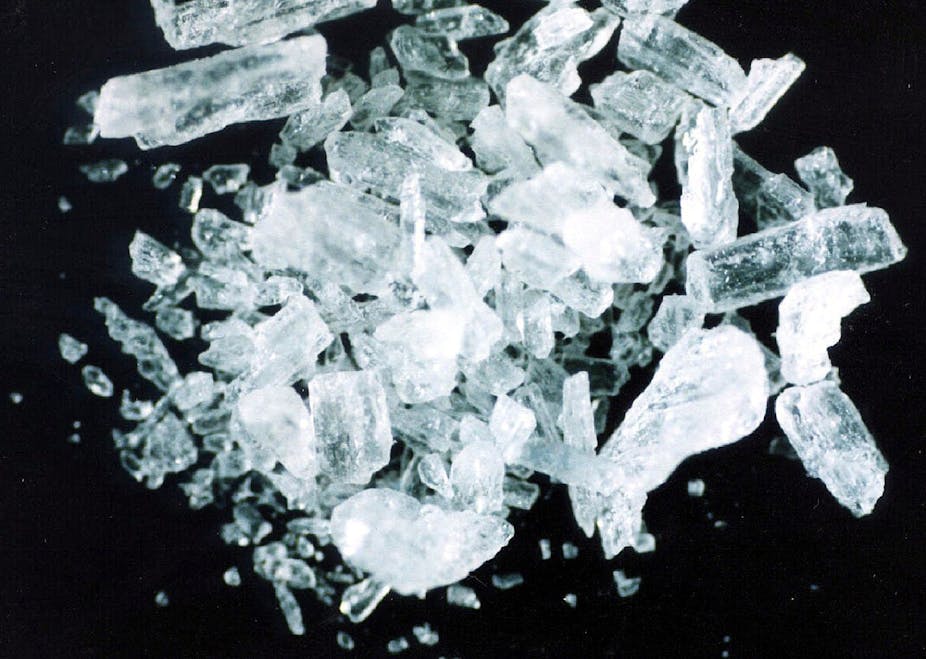The chairman of the Northern Territory’s parliamentary inquiry into crystal methamphetamine, Nathan Barrett MP, has advocated for random drug testing of private and public sector workers as well as nightclub goers. Mr Barrett also noted a preference for civil penalties, such as fines, over criminal charges for users who test positive.
When asked by The Conversation to clarify what exactly he was calling for, Mr Barrett said by email:
I would like to see hair follicle tests become the industry standard. It is able to provide clarity for a longer period of time on use of illicit substances… To be clear, I have doubt that punitive measures will ever effect addicts behaviour… If we can disrupt the market at the functional and recreational end, we can affect price and access at the dependent end of the spectrum.
Mr Barrett added that he would like to see more discussion of mandating fines for marijuana use, but would not support the decriminalisation of ice.
In fact, it is unlikely that drug testing in workplaces and at nightclubs will have any discernible impact on rates of use.
However, decriminalisation of drug use is at least associated with the reduction of legal-related harms and possibly rates of use in the community.
How does drug testing work?
Roadside drug testing is the most common form of illicit drug testing but employees in high-risk workplaces, such as mining, transport and construction, also sometimes face random drug tests at work.
Roadside drug testing operates in a similar way to random breath testing for alcohol, but uses a mouth swab that collects saliva for analysis. Other common methods for random testing include hair analysis, blood tests and urine testing. Unlike random breath testing, samples from saliva, hair blood and urine generally need to be analysed by a laboratory.
One of the problems with drug testing as an indicator of use is the detection time. Methamphetamine, for example, can be detected in saliva and blood for up to 12 hours, in urine for up to five days after use and in the hair up to 90 days after use.
This means that users may return a positive test, depending on the type of test used, even when they have no drugs in their system or have not used for some time.
Does random testing work?
There has been virtually no examination of the effect of roadside drug testing on crash outcomes, so it is difficult to say whether it has any long-term benefits.
Given its intrusive nature, our society generally considers workplace testing acceptable only in safety sensitive industries and positions as a harm-minimisation measure.
However, there is little evidence that alcohol and drug testing in the workplace impacts on use, improves safety or reduces accident risk.
Drug treatment is an effective demand reduction strategy and is also cost effective compared to supply reduction strategies such as “tough on drugs” style law enforcement.
There is little research into the effects of random (or otherwise) police drug testing or other similar activities, such as use of detection sniffer dogs, in nightclubs and party venues.
Anecdotal reports suggest that these activities may increase harms among party goers; for example, users may “preload” large amounts of a drug prior to entering a venue in anticipation of restricted ability to use during the night due to policing activity. Or they may ingest large amounts to divest themselves of possession of a drug when police appear at a venue. There is little research showing these activities are effective in reducing use.
Are fines more effective than criminal charges for users who test positive?
In Australia, we know there has been no discernible increase in marijuana use as a result of decriminalisation of cannabis.
In 2001, Portugal approved a new legal framework in which all drugs were decriminalised. Most drugs were still illegal but possession for personal use and drug use itself are considered administrative violations subject to a fine rather than criminal charges. Drug trafficking is still prosecuted as a criminal offence.
The evaluation of the new policy over a ten-year period shows that decriminalisation has had no adverse effect on drug use rates, and in many categories Portugal’s rates are among the lowest in the EU. Indeed EU states with strict criminal sanctions for use and possession are more likely to have high rates of use of illicit drugs.
Criminal sanctions appear to do little to deter drug use and in fact there is some evidence to suggest that decriminalisation may be associated with reduced drug use in the community.
Drug testing is an intrusive, time consuming and expensive exercise and there is little evidence that it reduces drug use over the long term, especially taking into account the very low prevalence of recent methamphetamine use in the community (currently estimated to be around 2% of the general population over 14 years).
Other strategies, such as treatment, appear to be more effective in reducing the demand for drugs in the community, and may be more cost effective.

